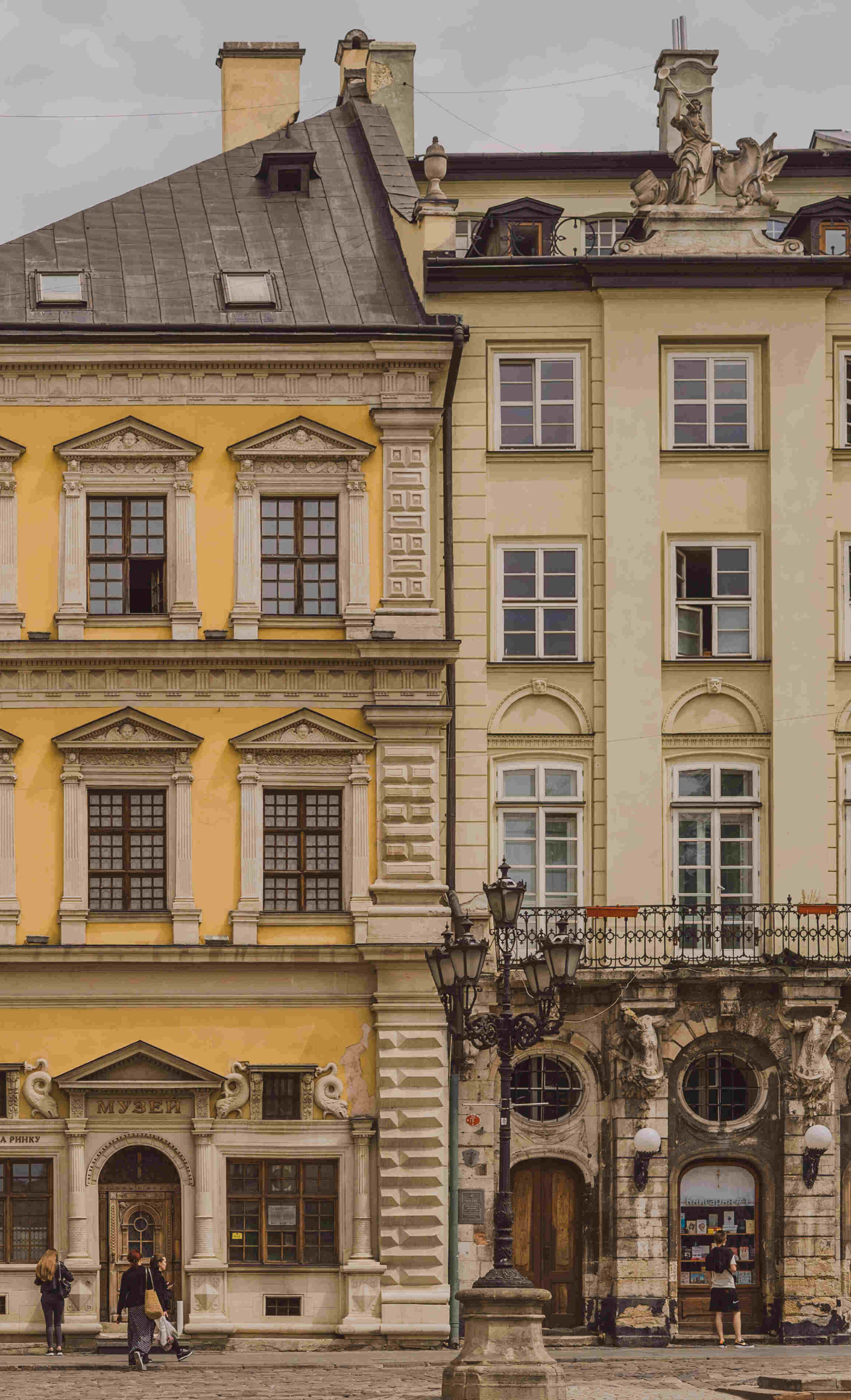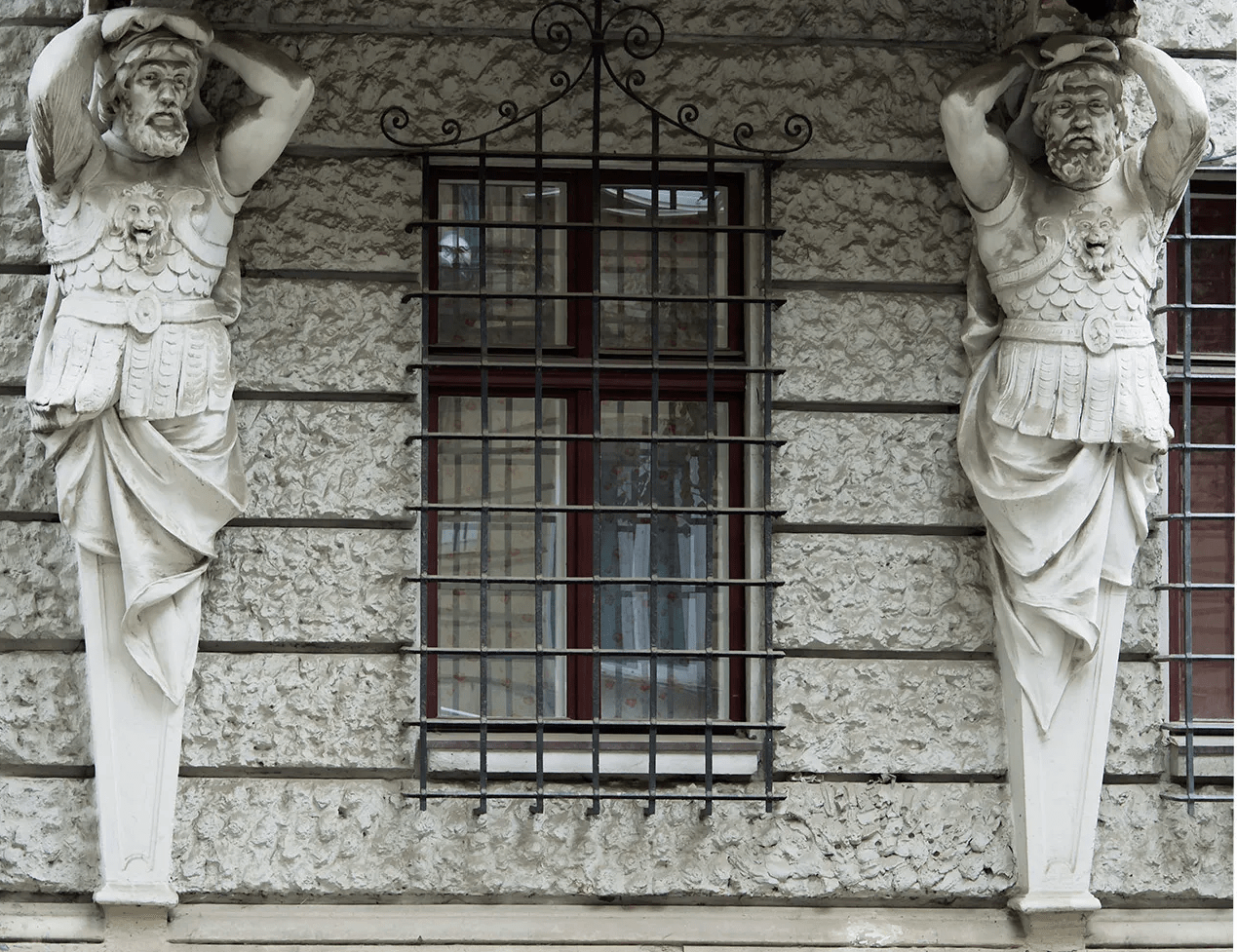Throughout its history, Lviv has repeatedly served as a platform for bold experiments. Talented architects, sculptors, true masters of their craft honed their skills here. Some followed established canons, while others were in search of the new, striving to surprise local residents with unconventional interpretations. Now, let's delve into the latter.
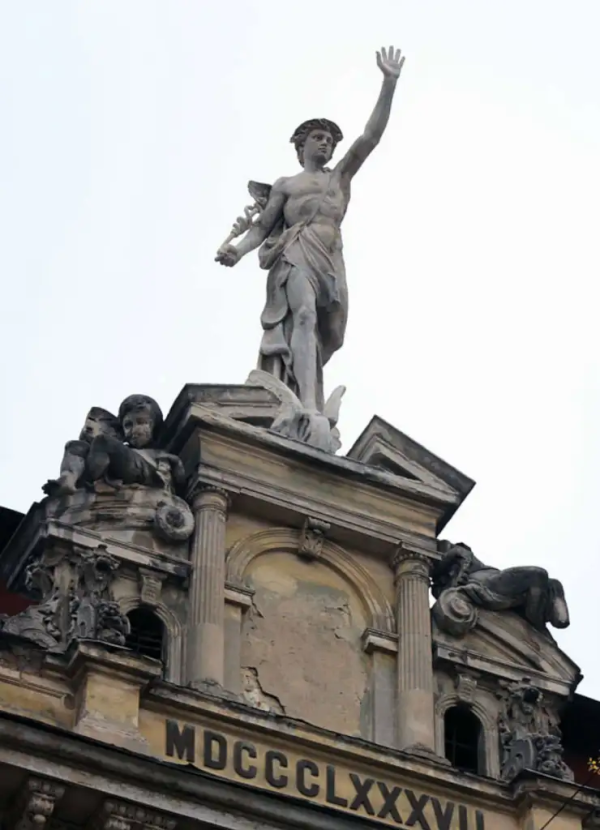
Lviv - the city of trade
On the facades of Lviv buildings, you often come across the god Mercury (Hermes). This is quite natural, as he is the god of commerce, and Lviv was a significant trade center. At the same time, most depictions of Mercury are quite ambiguous and provoke curiosity. For instance, Mercury towering over the building at Sichovykh Striltsiv, 3. This structure was erected for the railway administration, and the sculptor behind the artwork is Leonard Marconi. It's not easy to recognize Mercury in the relief on the house at 24 Rynok Square, where he is depicted wrestling with snakes. A highly original relief by Richard Pliggal on the building at 2 Horodotska Street features Mercury in the center, holding the caduceus. Beside him are putti, symbolizing mechanics and craftsmanship.
Lviv - the city of saints
Sculptures of Saint Onuphrius are also encountered in Lviv. For example, in an improvised cave below the entrance to the St. George's Cathedral, also near the Monastery of Saint Onuphrius. However, the most remarkable one, often observed but not always deciphered, is the sculpture of this saint on the building at 7 Krakivska Street. Saint Onuphrius is typically depicted naked with a long beard. The sculpture is in need of restoration, making it challenging to decipher. Not everyone will guess that the figure before them is Saint Onuphrius.
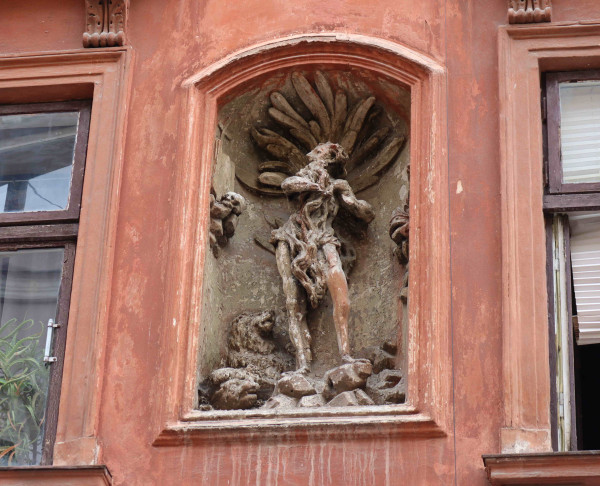
The Lviv 'sea' of emotions and aesthetic satisfaction
Lviv is far from the sea and large bodies of water, but it is rich in symbols associated with water and the sea. For instance, the embellishments on the building at 8 Rynok Square. The structure itself is quite old, and the decorations date back to the 19th century. Here, you can find the god of the seas, Neptune, with his characteristic trident. He is on a chariot-boat pulled by horses from the waters of the world ocean. On either side of Neptune are unusual creatures with hooves and human features.
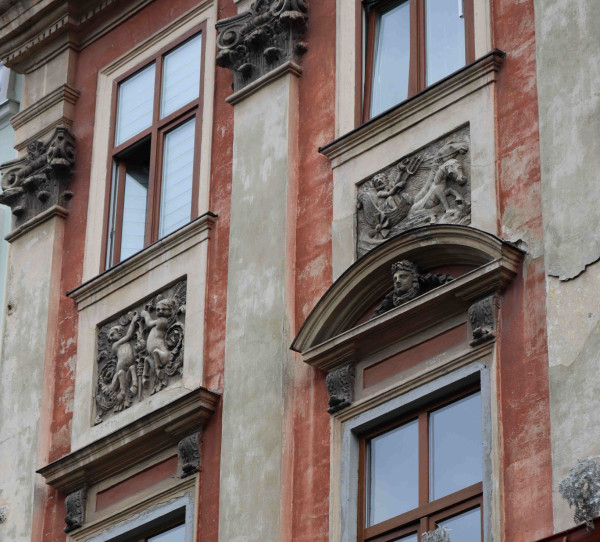
Many facades of Lviv buildings feature atlantes. They 'support' balconies, perform other functions, and simply delight passersby. Atlantes on Saksahanskoho Street, 11, are particularly eye-catching. In addition to their sturdy athletic bodies, they are distinguished by human features.
Covered from above with something resembling the skin of wild animals, which makes them unique. The building at 33 Franka Street is known as the 'House with Atlantes.' On its facade, there are six pairs of atlantes figures. They are atypical: they don't support the building; rather, its elements seem to rest on them. Equally enigmatic is the mustachioed mascaron above the atlantes, above the semicircular window.
The Sphinxes of Lviv
The most enduring trace remains in our consciousness from the first impression. It is unlikely that among the residents of Lviv, there are those who have never seen a sphinx, even in a picture. If such individuals exist, they should avoid walking near the building at 102 Zelena Street. It was constructed in 1939, designed by Józef Zemler. The structure is elegant, with columns on either side of the entrance, and two figurines that can be considered the author's interpretation of the legendary character from ancient Egyptian mythology - the Sphinx.
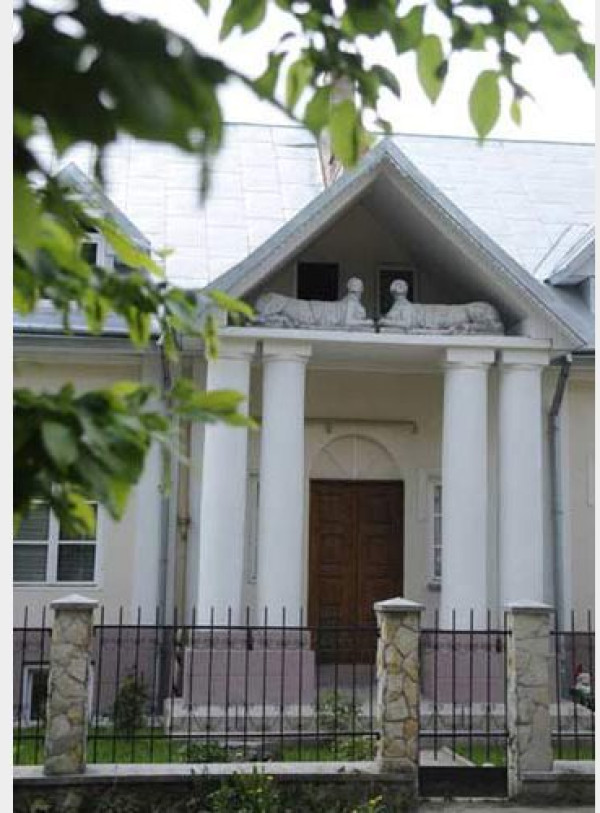
The "Sphinxes" from Zelena Street, from which the building is referred to as the 'Palace with Sphinxes,' are quite charming and indeed reminiscent of the famous mythical beast. At the same time, they are very distinctive. One must have a developed imagination to see them as an architectural landmark worth traveling to Egypt for. It's harder to overlook the sphinxes on the building at 34 Krakivska Street. They bear a closer resemblance to the legendary prototype. In addition to the winged sphinxes, this building features heraldic lions, cherubic putti, and other decorations.
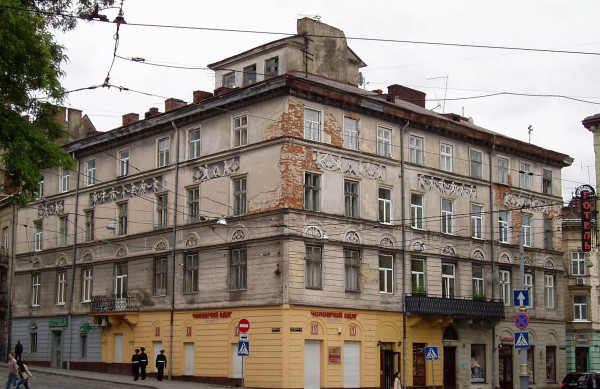
A full cauldron of chimeras
The whimsical intertwining of instruments and plant ornaments adorns the facade of the building at 9 Dudaeva Street. This composition is crowned by a small inconspicuous dragon. Equally mysterious creatures can be found at the base of the lanterns decorating the entrance to the main building of Lviv Polytechnic: they have features of lions, dragons, as well as anthropomorphic elements. There was once a practice of depicting mascarons above entrances to buildings. They were supposed to protect against evil forces, although they themselves were not always attractive. One such mascaron is located at 29 Svobody Avenue. It seems perfect for horror movie scenes.
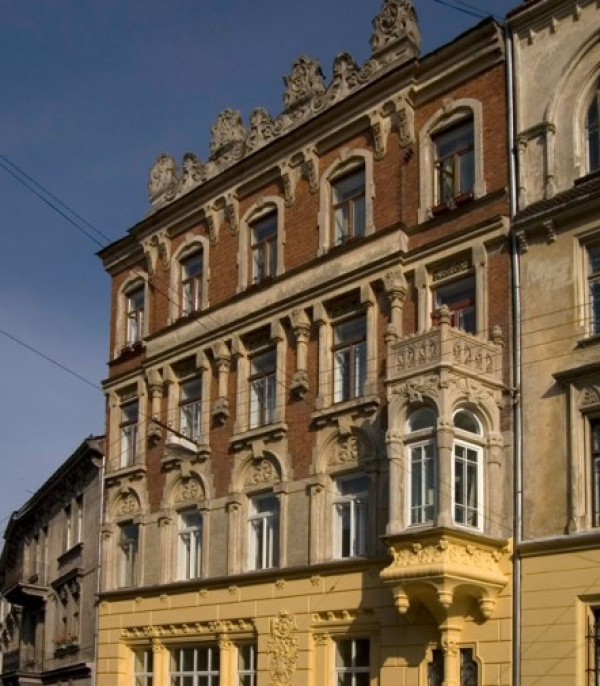
Among the most whimsical creations of local sculptors are the creature from the Jozefa Franz villa and the bas-relief 'War' at 50 Mushaka Street. The Jozefa Franz villa was constructed at the end of the 19th century, with its decoration entrusted to Edmund Plishevskyi. The latter became the creator of a winged creature with vivid zoomorphic and anthropomorphic features. 'War' by Vladyslav Yarotskyi is a bas-relief featuring a mysterious warrior. Armed with a bow and arrows, the figure also wields a sword. A snake coils around its neck, and the face is covered by a mask. This sculpture has been 'living' in Lviv for over a century, yet there is still uncertainty about the specific character depicted. Perhaps it represents one of the heroes from ancient Indian epics.
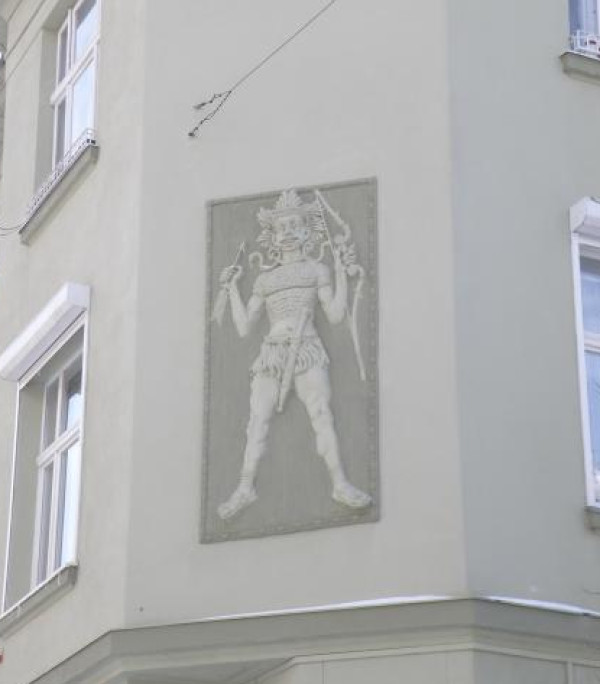
There are plenty of characters on Lviv buildings that are not so easy to decipher. One such character is found on the former Prague Bank building, now Prominvestbank. The structure was built according to the design by architect Matej Blecha back in 1912. The facade decorations were handled by sculptor Emanuel Kodet.

